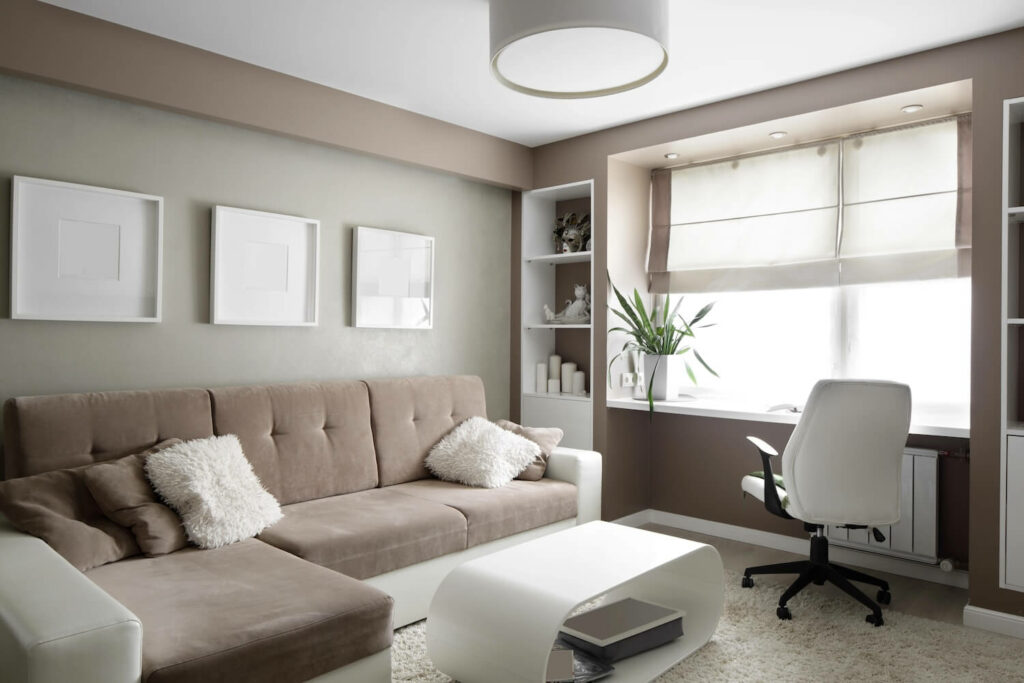
Designing your dream home is a deeply personal and exciting journey. It involves making countless decisions, from floor plans and furniture choices to the color palette that will define your living spaces. One of the most impactful yet often overlooked aspects of home design is color. The right colors can transform a space, influence your mood, and create harmony throughout your home. This is where color consultants come in. These professionals specialize in helping you choose colors that align with your vision and bring your dream home to life.
In this article, we’ll explore how color consultants can turn your vision into reality, providing practical tips and insights to make your home design process seamless and successful.
Understanding the Role of a Color Consultant
Before delving into how color consultants can help, it’s essential to understand what they do. A professional color consultant provides expert advice on color choices for various design elements. Their role encompasses:
- Assessing Your Needs: Color consultants begin by understanding your preferences, lifestyle, and the overall vision you have for your home. They consider factors such as the purpose of each room, natural light, and existing furnishings.
- Creating a Color Palette: Based on their assessment, consultants develop a cohesive color palette that reflects your style and enhances the functionality of your space. They consider color theory, trends, and how different shades interact with one another.
- Providing Product Recommendations: Color consultants often recommend specific paint brands, finishes, and other materials that align with your chosen palette. They may also suggest complementary accessories, fabrics, and furniture.
- Overseeing Implementation: Some consultants offer project management services, ensuring that the color choices are applied correctly and consistently throughout the design process.
- Adjusting as Needed: As the project progresses, color consultants can make adjustments to the palette or provide solutions if unexpected issues arise.
Why You Need a Color Consultant
Choosing colors for your home might seem straightforward, but it can be surprisingly complex. Here’s why working with a color consultant can be beneficial:
Color Expertise and Paint Experience
Color consultants have a deep understanding of color theory, trends, and the impact of colors on mood and space. Their expertise ensures that your choices are both aesthetically pleasing and functional.
Saves Time and Reduces Stress
With so many color options available, the decision-making process can be overwhelming. A color consultant streamlines the process, saving you time and reducing the stress of making numerous decisions.
Avoiding Costly Design Mistakes
Choosing the wrong color can lead to expensive mistakes, such as repainting or buying new furnishings. Consultants help you avoid these pitfalls by providing expert guidance and recommendations.
Enhancing Your Home’s Value
A well-designed color scheme can enhance the overall value of your home. A color consultant ensures that your choices are not only stylish but also add to your property’s appeal.
How to Work with a Color Consultant
To make the most of your ideas and experience, learn these steps:
- Define Your Vision: Before meeting with a consultant, have a clear idea of your vision for your home. Consider factors such as your preferred style, the atmosphere you want to create, and any specific color preferences.
- Prepare Your Space: Provide the consultant with details about your space, including floor plans, photos, and existing design elements. This information helps them understand the context and make informed recommendations.
- Communicate Openly: Share your thoughts, preferences, and any concerns with the consultant. The more they understand your vision, the better they can tailor their recommendations to suit your needs.
- Review and Approve: The consultant will present color options and palettes based on your discussions. Take the time to review these suggestions carefully and provide feedback. It’s important to feel confident and excited about the final choices.
- Trust Their Expertise: While your input is crucial, remember that color consultants bring a wealth of knowledge to the table. Trust their expertise and be open to their recommendations.
Key Considerations in Choosing Colors
When selecting colors for your home, several key considerations can guide your choices:
- Natural Light: The amount and direction of natural light can significantly impact how colors appear in a space. Color consultants consider these factors to ensure that your chosen colors look their best throughout the day.
- Room Function: Different colors can evoke various emotions and suit different purposes. For example, calming blues and greens are ideal for bedrooms, while vibrant reds and oranges can energize social spaces like living rooms.
- Existing Furnishings and Décor: Your color palette should complement your existing furnishings and décor. Consultants can help you choose colors that enhance and harmonize with your current pieces.
- Architectural Style: The architectural style of your home can influence your color choices. Consultants consider the design elements of your space to ensure that the color scheme aligns with the overall aesthetic.
- Personal Preferences: Ultimately, your personal preferences should guide the color selection process. A color consultant helps translate your tastes into a cohesive and stylish palette.
Popular Color Trends for Modern Homes
While personal preferences are paramount, it’s also helpful to be aware of current color trends. Here are some popular trends that color consultants may incorporate into your design:
Neutral Tones
Neutral colors such as shades of beige, gray, and white continue to be popular for their versatility and timeless appeal. They provide a blank canvas that allows other design elements to shine.
Earthy Hues
Colors inspired by nature, such as olive greens, terracotta, and warm browns, create a grounded and cozy atmosphere. These tones work well in creating a serene and inviting space.
Bold Accents
Vibrant colors like deep blues, emerald greens, and rich reds can be used as accent colors to add drama and personality to a room. These shades are often used in smaller doses to create focal points.
Soft Pastels
Soft pastels, including pale pinks, mint greens, and lavender, are ideal for creating a calming and airy environment. They are particularly popular in bedrooms and bathrooms.
Learn Monochromatic Schemes
Monochromatic color schemes, which involve using variations of a single color, create a cohesive and sophisticated look. This approach can be particularly effective in modern and minimalist designs.
The Impact of Color on Mood and Space
Colors have a profound impact on how we perceive and experience our environment. Here’s how different colors can influence mood and space:
- Warm Colors: Colors like red, orange, and yellow are known for their stimulating and energizing effects. They can make a space feel vibrant and lively but should be used sparingly in areas where you want to create a more calming atmosphere.
- Cool Colors: Blues, greens, and purples are known for their calming and soothing qualities. They can create a serene and relaxing environment, making them ideal for bedrooms and spaces intended for rest and relaxation.
- Light Colors: Light colors, such as pastels and off-whites, can make a room feel larger and more open. They are especially useful in small or dimly lit spaces to create a sense of airiness.
- Dark Colors: Dark colors, such as navy and charcoal, add depth and sophistication to a room. They can create a cozy and intimate atmosphere but may make a space feel smaller if used excessively.
Case Studies: Success Stories with Color Consultants
To illustrate the impact of color consultants, let’s look at a few success stories:
- Modern Family Home: A family with a modern home wanted to create a cohesive and stylish look. The color consultant recommended a neutral palette with bold accent colors. The result was a harmonious blend of whites and grays with vibrant blue accents, transforming the space into a contemporary and inviting home.
- Cozy Cottage: A couple renovating a cozy cottage wanted to evoke a warm and welcoming atmosphere. The consultant suggested earthy tones and soft pastels, creating a comfortable and charming environment that perfectly matched their vision.
- Urban Apartment: An urban apartment owner desired a sophisticated and elegant look. The color consultant recommended a monochromatic scheme with various shades of gray and deep blue accents. The result was a chic and modern space that reflected the owner’s personal ideas and style.
Conclusion
Designing your dream home is a rewarding journey, and color plays a crucial role in shaping your living spaces. Working with a color consultant can transform your vision into reality by providing expert guidance, saving you time, and ensuring that your color choices enhance your home’s beauty and functionality. By understanding the role of a color consultant, considering key factors in color selection, and embracing current trends, you can create a home that is not only visually stunning but also a true reflection of your personality and lifestyle.
Whether you’re embarking on a complete home renovation or simply updating a few rooms, partnering with a color consultant can make all the difference. Their expertise and insights will help you navigate the complex world of color and design, turning your dream home into a beautiful reality.
Read Other Blog Posts
Will Exterior Painting Help Increase My Property Value?
When it comes to...
Paint Colors: How to Choose The Best For Your Family Home
The color of your house...
See the 5 Benefits of Hiring a Local Painting Contractor
Many homeowners don't think to...
The 5 Top Questions to Ask Your Painting Contractor
When it comes to painting...
How to Prep for Interior Painting
Are you planning on painting...





